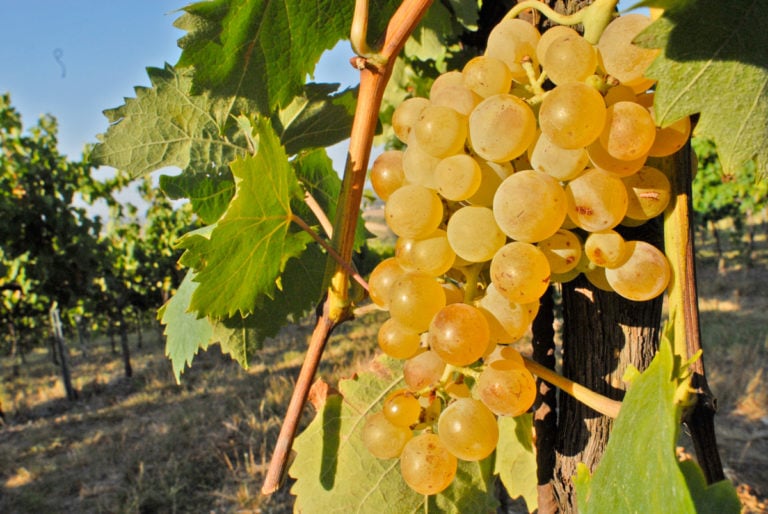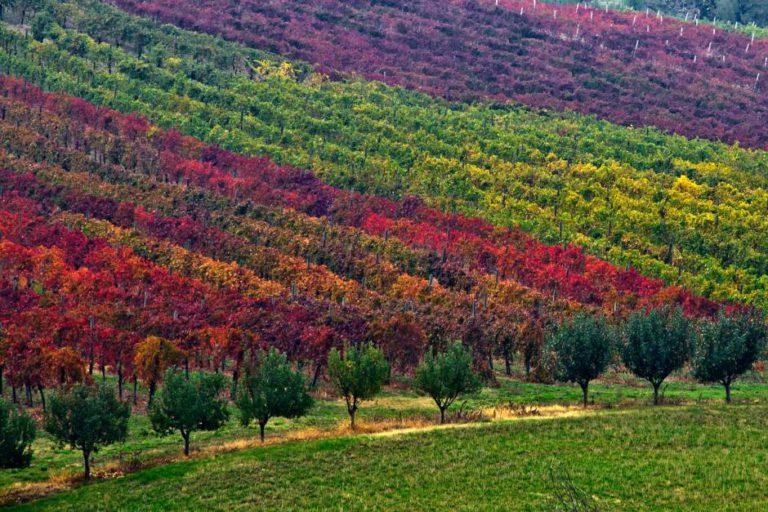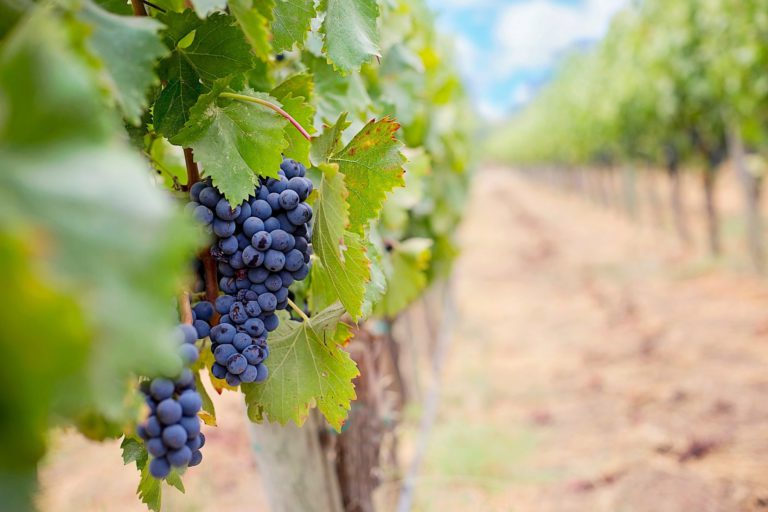Emilia Romagna is certainly famous for its food and drink tradition, but its winemaking culture is fascinating as well.
After the previous editions where we told about the excellence of the wines of Romagna and later of Emilia, today we move in the territories of Bologna and Modena to get to know the production of their wines, with their peculiarities and stories: it is a fascinating and alluring world characterized by great variety and, most of all, quality.
Lambrusco
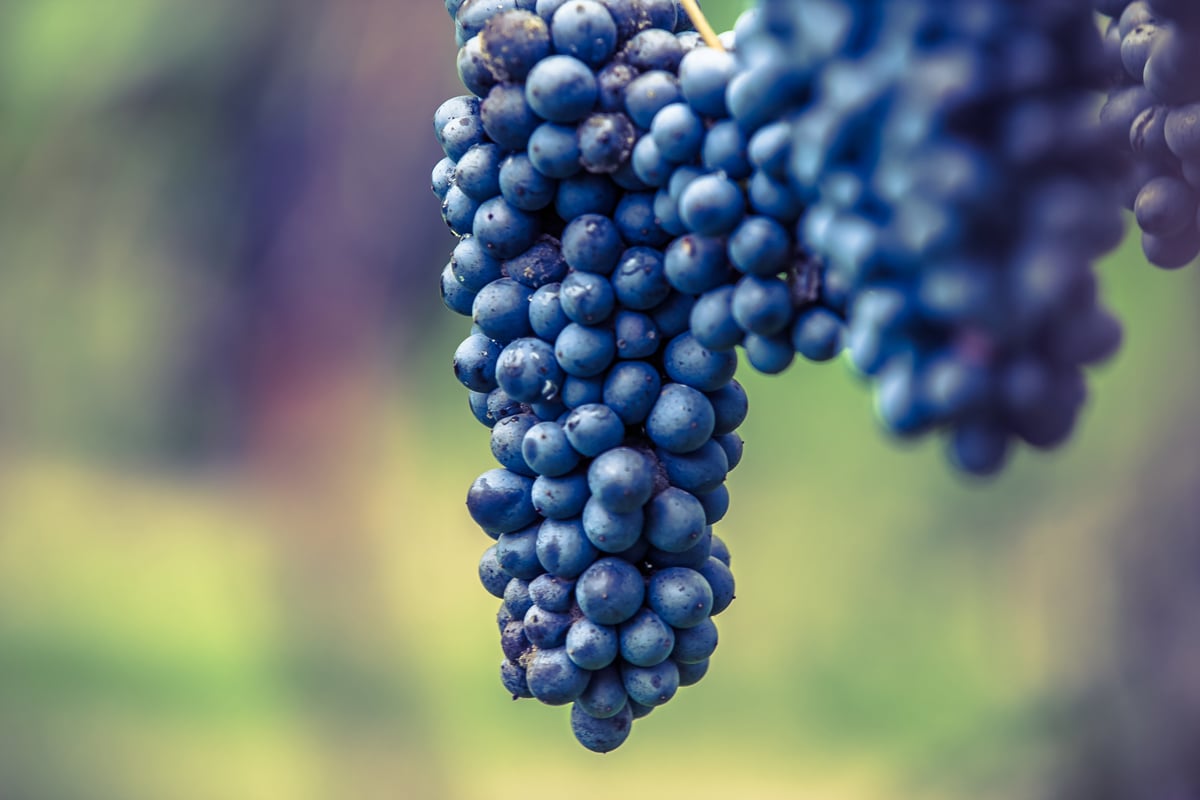
Lambrusco is a red sparkling wine that boasts a century-old tradition and takes us back to the Roman times, when wild grapevine was referred to with the term “lambrusca”. It is made from local wine varieties and its grapes are grown in the territories of Modena, Reggio Emilia and, to a lesser extent, of Parma and Mantua.
In the last decades, thanks to its peculiar features – frothy bubbles, a fruity aroma and low alcohol content – it was able to hit the international market, becoming one of the most famous Italian wines in the world.
In the area of Modena, four Doc (wines with a registered designation of origin) have been recognised: Lambrusco Grasparossa di Castelvetro Doc, Lambrusco di Sorbara Doc, Lambrusco Salamino di Santa Croce Doc e Lambrusco Modena Doc.
Montuni
This wine with an unusual name is produced with the white berry grapevine variety Montù (Modena Dop Bianco) in the valley crossed by the river Reno, between Bologna and Modena. The etymology of its name is uncertain: some connect it to Spain, others to Montonico dell’Ascolano and some others to a term in the Bolognese dialect “molt’ù”, which means “many grapes”.
It is part of the Reno Dop designation, which includes, besides Montuni, wines like Bianco and Pignoletto. It is a straw-yellow wine with a pleasant aroma and a dry and sweet taste.
Pagadebit
Although it belongs to the Doc designation of Romagna, some Bombino Bianco grapevine varieties can be found in the surroundings of Imola. Pagadebit is an extremely versatile wine, able to pair with a great number of traditional local dishes thanks to its dry, perfumed and intense taste.
Pignoletto
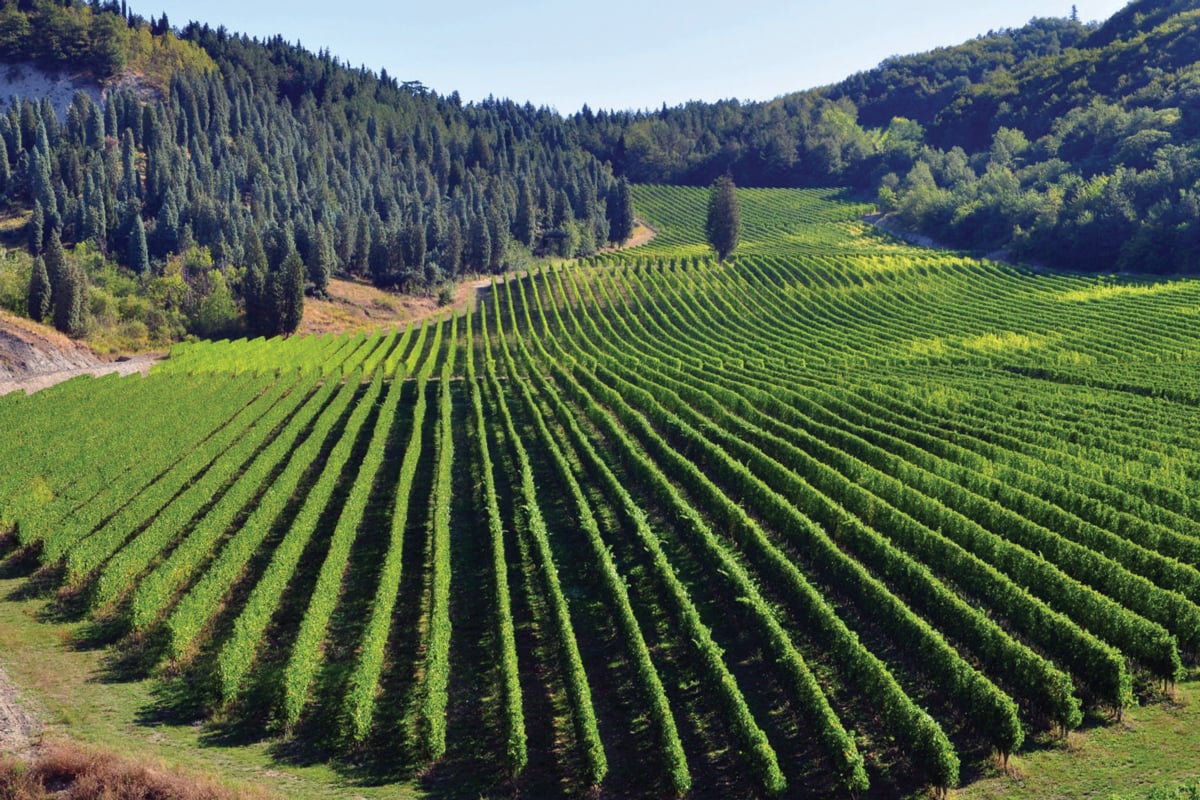
Pignoletto is the most representative wine of the Bolognese hills, and it is made with the grapevine variety Grechetto Gentile. In this area, there are two registered designations: Pignoletto Doc and Colli Bolognesi Pignoletto Docg.
This wine has very ancient origins: during the 1st century AD, Pliny the Elder mentioned in his Naturalis Historia a wine called Pinum Laetum, but the first records in the area of Bologna date back to the second half of the 16th century.
It is a very pleasant wine, exuberant and light-bodied, with a bright straw-yellow colour and a delicate aroma with a bitter end note. It’s the perfect choice for light white meat or fish dishes or as an aperitivo.
Other than Bologna, you can also find it in the provinces of Modena (with the designation Modena Dop Bianco) and on the hills of Imola and Rimini, where it takes the name “Rebola”.
Sangiovese
Sangiovese is the undisputed king of the hill area that stretches from Rimini to Imola and it totally represents the soul of Romagna and its inhabitants: rough, frank and honest. The origin of the grapevine variety used for its production is uncertain and still debated, even if the most accepted theory is that it was born around the village of Santarcangelo di Romagna.
In the hills of Modena, being under the aegis of the DOC designation, it is a ruby-red wine with purple reflections produced using the namesake grapevine varieties – at least 85% . It has a delicate aroma and a full-bodied, dry and balanced taste.
Trebbiano
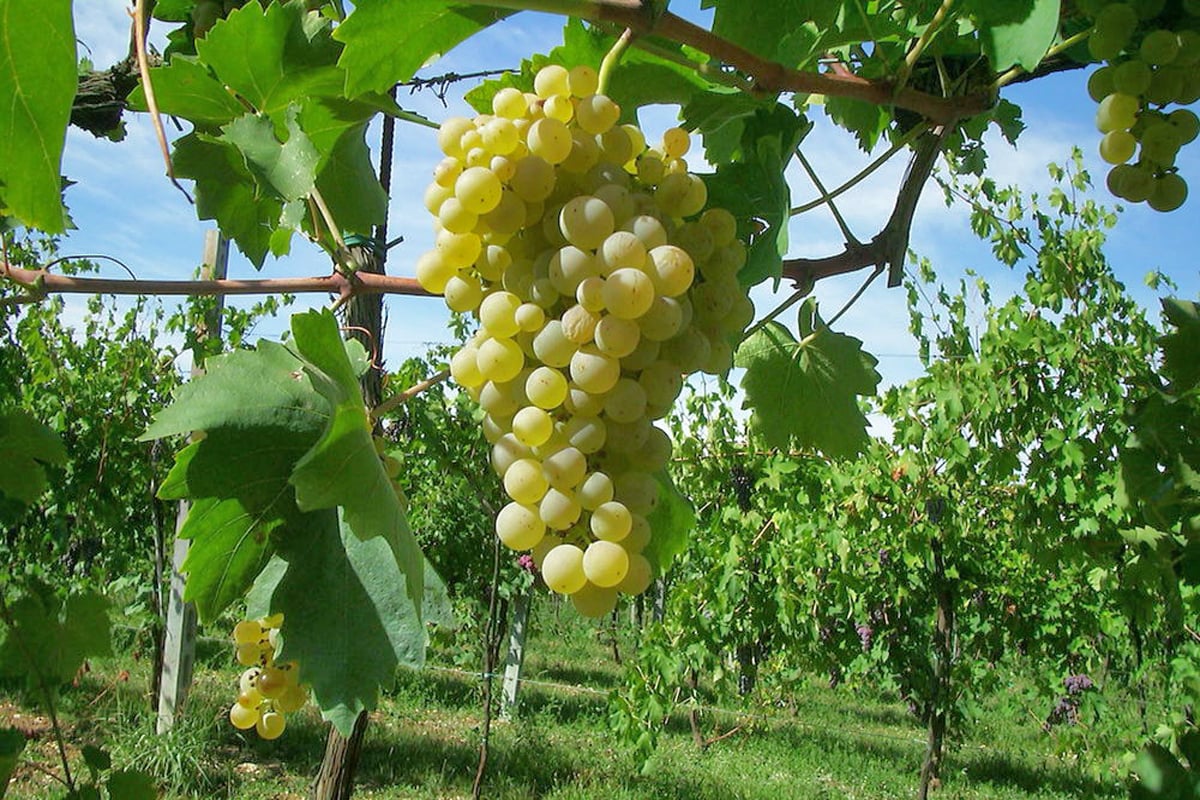
Trebbiano is the most renowned wine in Emilia Romagna. Even if it is mostly linked to the area of Ravenna, it is produced in the surroundings of Imola (Colli di Imola Dop Trebbiano) and Modena (Modena Dop Bianco) as well, and made for the most part with its namesake grapevine variety (at least 85%).
With a straw-yellow colour, a slightly perfumed aroma and a dry and savoury taste, it can be found even in its sparkling wine and spumante variants. It is the perfect wine to pair with fish or light first courses, as well as aperitivo.
Notes
In this area, along with the most famous local wine varieties, many other wines are made which have reached peaks of excellence over the last years, such as Pinot Bianco, Chardonnay, the delicate Riesling Italico and the full-bodied Sauvignon, along with Merlot, Cabernet Sauvignon and Barbera. This last one in particular is a historical wine of the hills of Bologna, where it still being produced. Barbera is also in high demand in the international market.
Remember that…
Less than a 15 minute-distance from Imola, travelling towards its interland hills, you will arrive in Dozza, a fascinating medieval village surrounded by vineyards, which is very well-known for the multicoloured walls of its streets. This city is the site of the Enoteca Regionale Emilia Romagna (Emilia Romagna Regional Wine Promotion Body), which has been promoting and safeguarding regional wines since 1970: in the 1000 sqm wine cellar there are more than 800 labels, all strictly produced within regional borders.
Author

Davide Marino
Davide Marino was born archaeologist but ended up doing other things. Rational – but not methodic, slow – but passionate. A young enthusiast with grey hair
You may also like
The Wines of Emilia
by Walter Manni /// November 14, 2018

Interested in our newsletter?
Every first of the month, an email (in Italian) with selected contents and upcoming events.
